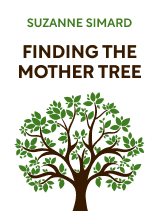

This article is an excerpt from the Shortform book guide to "Finding the Mother Tree" by Suzanne Simard. Shortform has the world's best summaries and analyses of books you should be reading.
Like this article? Sign up for a free trial here.
What helps pine tree growth? Why can’t pines survive alone?
While researching tree cooperation, Suzanne Simard found that alder trees significantly help pine tree growth. In her book Finding the Mother Tree, Simard gives three reasons for this.
Read more to learn how pine tree growth relies on alder trees.
Alder Contribute to Pine Tree Growth
To examine the competition theory, Simard’s first experiment involved eliminating alder trees that were presumed to be in competition for water and nutrients with cultivated pine trees. Her job was to compare how pines grew in clear-cut plots versus in plots mixed with alder. While the pines in the clear-cut area did better initially, Simard found they didn’t thrive alone long-term, for three reasons:
- The alder helped distribute water to the birch.
- The alder provided nitrogen and other nutrients to the birch.
- The alder helped protect the birch from damage by foragers and weather.
Let’s look at how alder contributes to pine tree growth, by reviewing her experiment and results.
The Experiment and Results
The Forest Service noted that in areas where alder were growing among their cultivated pine trees, they were outgrowing the young pines. Simard explains that it was assumed they were blocking the sunlight and diverting the nutrients from the pine seedlings. So, she set up controlled experiments, where different plots were treated differently, to test this competition theory.
In one plot, Simard poisoned and killed all the alder, leaving the pines 100% free to grow. In other plots she killed different percentages of alder, and in one plot she left all the alder to grow alongside the pines—the way it naturally occurred. Then, throughout the growing season, she tested how well the pines were thriving in the various plots, in terms of water, nutrients, and healthy growth.
Water: When Simard measured the water content in the alder and pine trees, initially the pines in the clear-cut plots were receiving significantly more water than those growing alongside the alder. She found this discouraging, as it appeared to support the competition theory.
However, later in the growing season, when she measured again, the pine seedlings growing with the alders had more water. Simard discovered this was due to hydraulic redistribution, a process whereby the deeper tap roots of the alder were bringing underground water up to the surface, where the shallower pine roots could access it. She realized then that this was a seasonal relationship that would have gone unrecognized had she not tested the water across the longer growing cycle.
(Shortform note: Beyond pine forests, hydraulic redistribution is a crucial process for the health of ecosystems, and it requires different species growing together. Plants with deeper roots bring water closer to the surface where shallow-rooted plants like grasses and seedlings can access it. The process helps both the shallow- and deep-rooted plants by ensuring more even water distribution and by facilitating the distribution of nutrients along with the water.)
Nutrients: In addition to water, Simard conducted analyses for nutrient content. Similar to the initial water results, her first tests indicated that the pines in the clear-cut plot were obtaining more nutrients and growing faster. This was because the cut alder had been left to decompose around the pines, and the decomposing matter provided the pines with nutrients.
However, once all that organic matter decomposed in the first year, she noted, those nutrients would be gone. So, after the first year, when the short-term nutrient supply was exhausted, the clear-cut plot lagged and the alder-companion plot started doing better. She observed that the living alder were providing a slower but steady source of nitrogen, so the soil was more nutritious in the area where alder were growing.
Weather and pest damage: In addition to water and nutrient levels, Simard observed that in the clear-cut plot, rainwater was washing away the topsoil, because the thick root systems of the alder weren’t there to prevent it—so the pines in that plot were also slowly losing water and nutrients from the erosion.
She also found that without the protection of the leafy plants around them, the young pine trees in the cleared plot were more susceptible to sunburn, frost damage, and being eaten by foragers like voles and rabbits.
Many years later, upon returning to these sites, Simard observed that the cleared-plot pines had become susceptible to pine beetle infestation, and most of them were dead or dying. But she points out that it takes decades for the full results of this kind of experiment to show up. As a result, Simard concluded that the practices in place were based on assumptions made from short-term observations, because policymakers didn’t have the patience to wait for longer-term results.
Alder Is an Ideal Companion
Nitrogen is an essential nutrient for trees, and alder is known to be one of only a few “nitrogen fixing” species of tree. This means it’s able to take nitrogen from the air and convert it into nitrates in the soil. It does this with help from a bacteria that grows on its roots, with which alder has a symbiotic (mutually beneficial) relationship—similar to that between trees and fungi. The bacteria help convert nitrogen for the tree, and the tree provides sugar that nourishes the bacteria.
Because alder has this ability that most trees lack, it’s an excellent companion since anything growing around it can benefit from the nitrogen-enriched soil. Alder has been used intentionally as a companion plant for centuries; there’s evidence that the ancient Inca used it for this purpose in their Andes mountain farmland.

———End of Preview———
Like what you just read? Read the rest of the world's best book summary and analysis of Suzanne Simard's "Finding the Mother Tree" at Shortform.
Here's what you'll find in our full Finding the Mother Tree summary:
- A look at Suzanne Simard's research on the relationships among trees
- What a Mother Tree is, and how it takes care of its community
- How trees communicate in an interconnected, underground network






